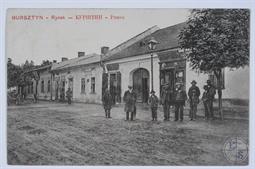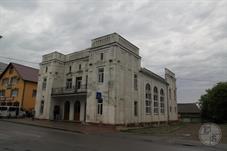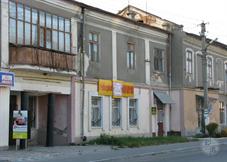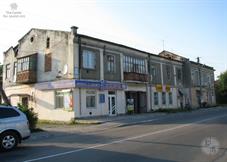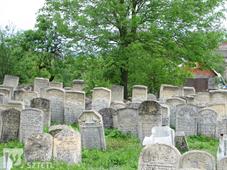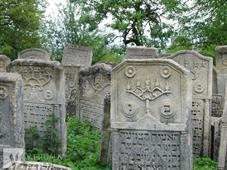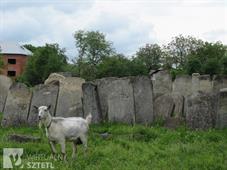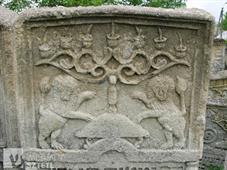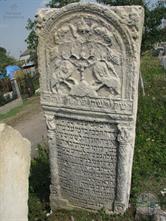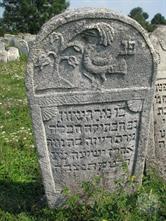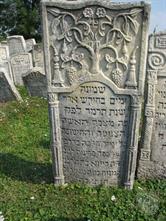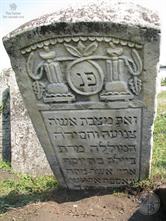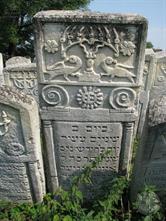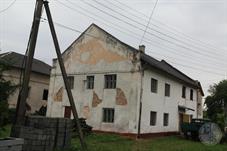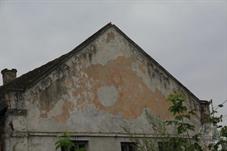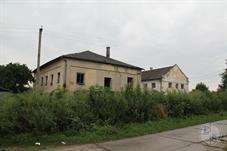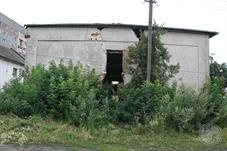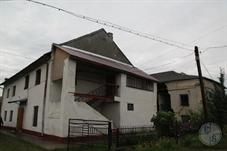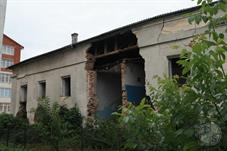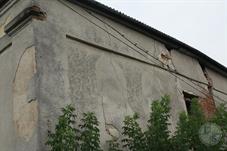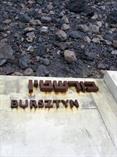Burshtyn
Sources:
- Pinkas Hakehillot Polin: Encyclopedia of Jewish Communities, Poland, Volume II, published by Yad Vashem, Jerusalem.
- Russian Jewish encyclopedia
- Jewish encyclopedia of Brockhaus & Efron
Photo:
- Eugene Shnaider
- Vladimir Levin, Jewish Galicia and Bukovina N.P.O. Published by Center for Jewish art
- Biblioteka Narodowa Polona
- Anna Susak, Virtual Shtetl
- Pinkas Hakehillot Polin: Encyclopedia of Jewish Communities, Poland, Volume II, published by Yad Vashem, Jerusalem.
- Russian Jewish encyclopedia
- Jewish encyclopedia of Brockhaus & Efron
Photo:
- Eugene Shnaider
- Vladimir Levin, Jewish Galicia and Bukovina N.P.O. Published by Center for Jewish art
- Biblioteka Narodowa Polona
- Anna Susak, Virtual Shtetl
Ivano-Frankivsk district, Ivano-Frankivsk region
The first written references to the settlement, which was the predecessor of the modern Burshtyn - Nove Selo (New Village) - dating from 1554 (according to other sources of 1436).
In XIX - early XX centuries - the city of the Rohatyn's Powiat of the Galicia Province in Austria-Hungary.
In 1919 - the city entered the Stanislav Voivodeship as part of Poland.
Since 1939 - as part of the Ukrainian SSR.
In XIX - early XX centuries - the city of the Rohatyn's Powiat of the Galicia Province in Austria-Hungary.
In 1919 - the city entered the Stanislav Voivodeship as part of Poland.
Since 1939 - as part of the Ukrainian SSR.
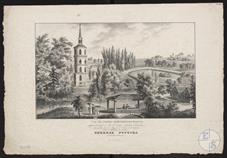 |
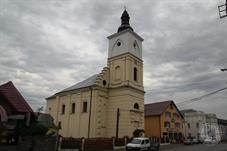 |
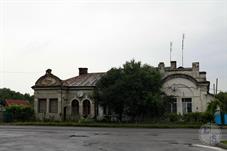 |
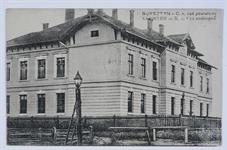 |
| Drawing with the view of the Burshtyn's garden, the 18th century | Church, 2015 | Old house on the outskirts, 2015 | |
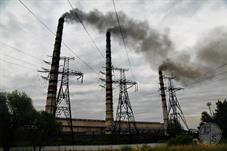 |
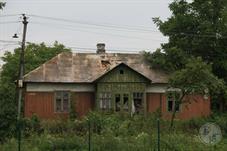 |
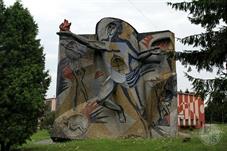 |
|
| Burshtyn power station |
Jews lived in Burshtyn since the beginning of the XVII century. At the beginning of the 11th century there was a Jewish cemetery. In the middle of the 18th century the synagogue was built.
The rabbi in Burshtyn in the 18th century was Zvi Ashkenazi.
In 1765, 582 Jews lived in Burshtin.
In the 1840s there was a Jewish doctor in Burshtyn, in 1850 - two Jewish doctors. The main affairs of Jews in the 19th century - trade.
In 1813, there were 413 Jews in Burshtyn, but by 1880 their number had grown until 2017 - 51% of the total population of the town.
At the beginning of the 20th century there were 2 Jewish banks in Burshtyn, united in a Credit bank.
At the beginning of the 20th century there were 10 synagogues, mainly Hasid's, a school for boys with the rights of general public schools, based in 1898 at the expense of the Baron Girsch Foundation (in 1908 - 160 students), a professional school for girls and reading rooms.
In 1909, a school was opened with teaching in Hebrew.
In 1900, 2005 Jews lived in Burshtyn (45.2%),
in 1910 - 2245 (45.8%).
The rabbi in Burshtyn in the 18th century was Zvi Ashkenazi.
In 1765, 582 Jews lived in Burshtin.
In the 1840s there was a Jewish doctor in Burshtyn, in 1850 - two Jewish doctors. The main affairs of Jews in the 19th century - trade.
In 1813, there were 413 Jews in Burshtyn, but by 1880 their number had grown until 2017 - 51% of the total population of the town.
At the beginning of the 20th century there were 2 Jewish banks in Burshtyn, united in a Credit bank.
At the beginning of the 20th century there were 10 synagogues, mainly Hasid's, a school for boys with the rights of general public schools, based in 1898 at the expense of the Baron Girsch Foundation (in 1908 - 160 students), a professional school for girls and reading rooms.
In 1909, a school was opened with teaching in Hebrew.
In 1900, 2005 Jews lived in Burshtyn (45.2%),
in 1910 - 2245 (45.8%).
In 1865-1914 Burshtyn was the residence of the Hasid Tsadik Nohum Eichenstein, great -grandson of the Zhidachiv Rebbe, r. Yitzhak. Although the Burshtyn dynasty is considered part of the Zhidachev, today in New York there are separate Burshtyn synagogues, and the dynasty is headed by the Burshtyn's Rebbe (in 2015 - rabbi Dovid Eichenstein).
Most among the Jews of Burshtyn were Belzer's and Chortkiv's Hasides.
Rabbins in Burshtyn in the 18th - 20th centuries there were Josef Teumim, Josef Schwartz, until 1898 - Meir Landa, in 1898-1907 - his son Moishe, son of Moishe, rabbi Hertz, was a rabbi until the beginning of the 1940s.
From the beginning of the 20th century, various Zionist organizations acted in Burshttn.
In 1914, the Cossack units of the Russian army raised in Burshtyn. A 70-year-old Jew was killed in the synagogue who tried to protect a Jewish girl from rape.
In 1920, during the pogrom arranged by troops of the Directory, 11 Jews were killed.
In the 1920-30s in Burshtyn, branches of various Jewish parties and organizations acted.
In 1921, 1431 Jews lived here - 40% of the total population,
in 1931 - 1802 Jews.
In 1940, several Jewish families were sent to the eastern regions of the USSR.
Most among the Jews of Burshtyn were Belzer's and Chortkiv's Hasides.
Rabbins in Burshtyn in the 18th - 20th centuries there were Josef Teumim, Josef Schwartz, until 1898 - Meir Landa, in 1898-1907 - his son Moishe, son of Moishe, rabbi Hertz, was a rabbi until the beginning of the 1940s.
From the beginning of the 20th century, various Zionist organizations acted in Burshttn.
In 1914, the Cossack units of the Russian army raised in Burshtyn. A 70-year-old Jew was killed in the synagogue who tried to protect a Jewish girl from rape.
In 1920, during the pogrom arranged by troops of the Directory, 11 Jews were killed.
In the 1920-30s in Burshtyn, branches of various Jewish parties and organizations acted.
In 1921, 1431 Jews lived here - 40% of the total population,
in 1931 - 1802 Jews.
In 1940, several Jewish families were sent to the eastern regions of the USSR.
On July 20, 1941, a Jewish pogrom, arranged by the Ukrainian police, occurred in Burshtyn.
In early August 1941, Judenrat was created, in September - the ghetto.
On September 21, 1942, about 200 Jews were taken out of Burshtyn to Belzhets, and the remaining Jews on October 26, 1942.
After the liberation in 1944, 13 Jews remained in Burshtyn.
In the 1950s several Jewish families lived in Burshtin. Buildings 2 surviving synagogues were used for storage facilities, a city park was divided in the Jewish cemetery.
Today there are no Jews here.
In early August 1941, Judenrat was created, in September - the ghetto.
On September 21, 1942, about 200 Jews were taken out of Burshtyn to Belzhets, and the remaining Jews on October 26, 1942.
After the liberation in 1944, 13 Jews remained in Burshtyn.
In the 1950s several Jewish families lived in Burshtin. Buildings 2 surviving synagogues were used for storage facilities, a city park was divided in the Jewish cemetery.
Today there are no Jews here.

- Home
- Shtetls
- Vinnytsia region
- Volyn region
- Dnipro region
- Donetsk region
- Zhytomyr region
- Zakarpattia region
- Zaporizhzhia region
- Ivano-Frankivsk region
- Kyiv region
- Kropyvnytskyi region
- Luhansk region
- Lviv region
- Mykolayiv region
- Odessa region
- Poltava region
- Rivne region
- Sumy region
- Ternopil region
- Kharkiv region
- Kherson region
- Khmelnytskyi region
- Chernihiv region
- Chernivtsi region
- Cherkasy region
- Crimea
- Synagogues
- Cemeteries
- Objects & guides
- Old photos
- History
- Contact
Jewish towns of Ukraine
Jewish towns of Ukraine
My shtetl
My shtetl
Donate
